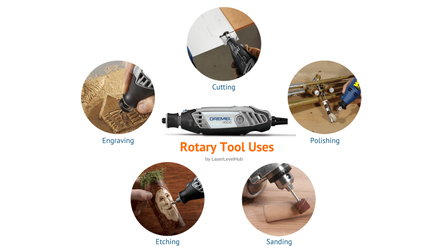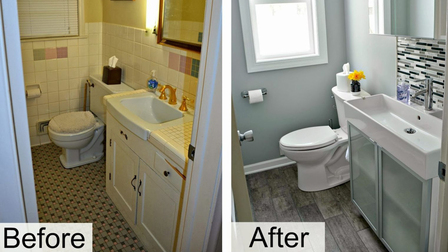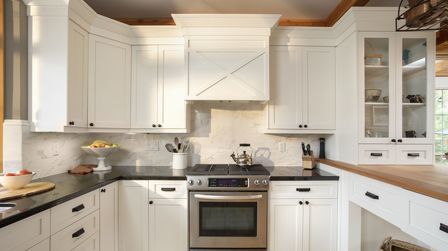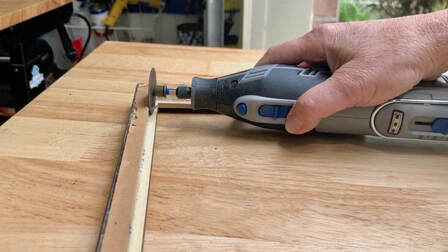Knowing how to heat a garage can come in handy if you plan on working on any DIY projects during the winter. It doesn’t take a lot of effort to keep the garage warm with a little planning, and it can significantly increase your level of comfort when doing any sort of work there.
It’s important to treat this as a long-term project though because any short-sighted solutions can usually end up more expensive than they seem at a glance.
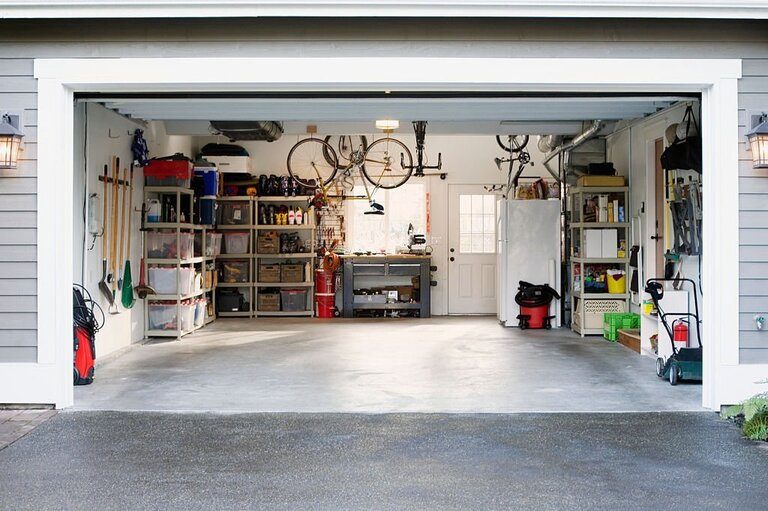
Why Should I Heat My Garage?
Heating your garage is about more than your basic comfort. If you’re doing any sort of work that involves power tools, keeping your environment warm enough is a basic safety precaution. If you don’t keep it from getting cold, you risk losing precision in your hands as they get numb from the loss of temperature. This can eventually lead to dangerous mistakes.
You might also find certain materials easier to work with when your garage is adequately warm. Otherwise, you might have to take extra steps to heat them up and bring them to a workable state before you can continue on your projects. This can add time and extra cost to any projects you work on.
If you’re working on a car or motorcycle, you might run into problems getting the engine started if your garage is too cold. While you can usually mitigate this problem with some additional work, keeping the garage warm will make your job significantly easier and will allow you to focus on the tasks that actually matter.
Finally, keeping your garage warm means that you don’t have to wear any bulky clothing while you’re in there. Warm clothes can severely restrict your range of motion, making it difficult to wield certain tools and maneuver in tight spaces. This is another factor that can make your work more dangerous and should be avoided.
Determine Why Your Garage Is Losing Heat
Your garage may be losing heat for a number of reasons. Identifying the root cause of the problem is important if you want to make the right investment into fixing it. Sometimes, it comes down to inadequate insulation. In other situations, you may need to install additional heating to properly cover the area.
First, try to figure out if you have any gaps in your insulation. This can be difficult with a larger garage and can take a while, so make sure to set aside enough time to properly inspect the whole area. Start with the most probable culprits – the garage door and any windows you have. Check if there is a draft in those areas and take notes of any specific draft points that you uncover.
One really easy way to check for a draft is with the use of a simple lighter. If the flame sways too much, this is a sign that you have air flowing through the area. Make sure your garage has no gas leaks or other potential hazards that should be kept far away from a flame though!
You should also check the insulation of your walls. This can be more difficult and may require specialized assistance. If you don’t feel comfortable with this type of work, consult an expert to guide you through the process. This is important because you may not be fully aware of every possible insulation problem and the methods used to identify those issues.
If your garage is losing a lot of heat, this could also indicate general problems with the insulation of your home. Depending on how your garage is connected to the rest of the house, it’s possible that heat is leaking through the walls and subsequently through other rooms of the home. This is another example of a problem that can be difficult to localize without expert assistance.
Ways to Keep Your Garage Warm in Winter
If you want to keep your garage warm in winter, there are various approaches you can take. Each situation is individual and may require a different solution. That’s why it’s important to investigate the issue beforehand and ensure that you know what’s actually causing your garage to lose heat.
1 - Insulate Your Garage Door

If the problem is related to the insulation of your garage door, you should either repair the issue locally or replace the entire insulation altogether. The latter option is usually preferred if it’s been a while since you’ve last had your garage renovated and your insulation is old. If you don’t know how to insulate a garage door, make sure to work with a competent specialist. Attempting to fix this yourself can cost a lot of money and you may still not do a good job in the end.
Under no circumstances should you attempt to dismantle your garage door on your own! The springs used in the mechanism are extremely powerful and can easily harm or even kill you if you don’t know how to disengage and remove them safely. If you have to do any serious work on your garage door, take the time to find a professional.
2 - Insulate Your Walls and Windows
If the door is not the problem, you might need to insulate the garage walls and windows. This is a more complicated job than insulating a garage door and requires more materials and time. For some types of garage walls, you may also need specialized equipment.
Things can get very messy if you have to dismantle parts of your interior walls. Removing wall panels improperly can make things even worse and degrade the quality of your insulation further. Assess the situation in as much detail as you can before attempting to do any work on your walls.
3 - Get a Space Heater

A jobsite heater is one of the best ways to approach this situation. A good portable heater is relatively inexpensive and can easily warm up a large area. You don’t need a lot of expertise if you don’t already know how to install a garage heater either. Most models available on the market are very simple in this regard.
Make sure to pick the right type of heater for your situation. You have various options: radiant heaters, convection heaters, forced air heaters, and a variety of sub-types for each of those, depending on factors like the energy source and portability.
If your garage is larger, you don’t necessarily need to invest in a huge heater that uses a lot of power. You can also get a small, portable model, and just carry it around with you as you move from one part of the garage to another.
Radiant heaters usually work best for this. They can provide you with heat almost instantly and don’t take up a lot of space. If you have a lot of flammable materials in your garage though, that might not be an ideal option.
4 - Install Floor Heating
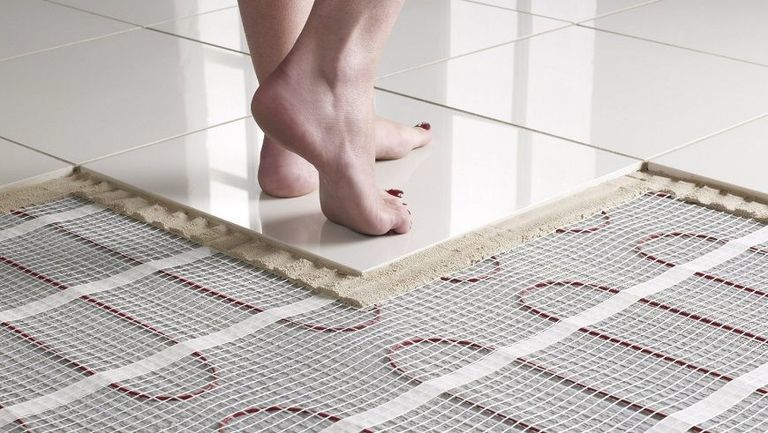
If you don’t want to get a space heater, installing floor heating is also an adequate solution. However, it costs more and may not be compatible with your garage by default.
Whether you can use floor heating or not depends on the layout of your garage and the material you use for its flooring. Sometimes it’s an easy job that won’t cost you a lot of money. In other cases, you may have to redo your entire flooring. But if you’re looking for a good long-term solution, this is often worth it.
Keep in mind that installing floor heating will usually require you to completely remove everything from your garage temporarily. This can create a huge mess while the project is underway.
If you don’t have anywhere to store your items while the floor heating is being installed, you may have to spend a lot of money on a storage unit. See if you can’t use a friend or relative’s house if you don’t have enough room on your own.
5 - Install a Furnace
A furnace can be a useful fixture in many homes, and it doesn’t cost a lot of money to install in most cases. It’s usually installed in your garage or basement, so you won’t have to make any special arrangements to prepare your home. This is another type of project that should always be done with professional assistance though.
Installing a furnace can have various implications on the safety of your home. It can also incur some significant running costs if you don’t pay attention to what you’re buying and how it’s installed. Generally speaking, a furnace is only a suitable solution if you were already planning on getting one, and you know that it will bring some specific benefits to the table in your specific scenario. Otherwise, it could be a bit wasteful.
6 - Ceiling Heating Panels
Ceiling heating panels are a more expensive approach to keeping your garage warm, but they can be a great option if regular heaters can’t be used for whatever reason.
For example, you may not have enough space available on the ground level. Or the layout of your garage might be unsuitable for traditional heaters. In those cases, a few strategically placed ceiling heating panels can address the situation very well.
Be prepared to spend a lot of money on this though, even if you want to go with a cheaper model. The market for ceiling heating panels isn’t very extensive and doesn’t offer a huge selection of models. Most of the products available are significantly more expensive than portable heaters with the same heating capacity.
7 - Whole House HVAC
And if you’re looking for something that can benefit your whole house, you should look into installing an HVAC system.
Needless to say, this is another example of something that should only be done by a professional. In fact, you may not even be allowed to do any HVAC work on your own home due to building codes and regulations.
When you’re hiring an expert for this type of job, it’s always worth spending a bit more money. This is a long-term investment and something you really don’t want to have to revisit a few months down the road due to repairs and general problems.
8 - Neutralize Drafts
You may have some minor drafts that aren’t necessarily caused by problems with your insulation. For example, the layout of your home could create a draft when certain interior doors are open. Addressing that kind of problem is as simple as identifying the sources of those drafts and taking some extra steps in your daily routine to prevent them.
Sometimes you might not even realize that your behavior throughout the day is causing a problem. If you have a habit of keeping certain doors open because it’s more convenient to make your way through the home, you can easily find yourself in such a situation.
The good news is that this is one of the simplest problems to fix when it comes to keeping your garage warm. It’s just a matter of adjusting your habits slightly.
9 - Step Up the Heating of Your Entire Home and Keep the Internal Garage Door Open
Another relatively simple option is to increase the heating of your home as a whole and just keep the internal garage door open all the time. This might seem wasteful, but it won’t add much to your heating bills if you do it carefully.
Close the doors to any rooms that don’t immediately require additional heating and try to focus all the heat towards your garage. Using a few strategically placed fans can improve the effectiveness of your setup.
10 - Install a Skylight
Last but not least, look into installing a skylight. This can be an expensive modification and one that’s not suitable for all garages, but it can help keep your garage warm by increasing the natural heat it receives through sunlight.
Plus, it will make the room look nicer. If you spend a lot of time in your garage tinkering with your projects, this is an option you should definitely consider.
Conclusion
Learning how to keep your garage warm in winter is not difficult once you’ve identified the main reasons for losing temperature in the first place. The market offers a wide range of solutions. Some can cost a lot of money, while others are not only cheap but can be handled by most homeowners without any specialized tools or equipment.
Make sure to study your situation in enough detail before committing to any specific solution, so that you can avoid wasting money and potentially endangering your life. When you’re in doubt, the simplest option of installing a space heater can usually work best for most people’s needs.

